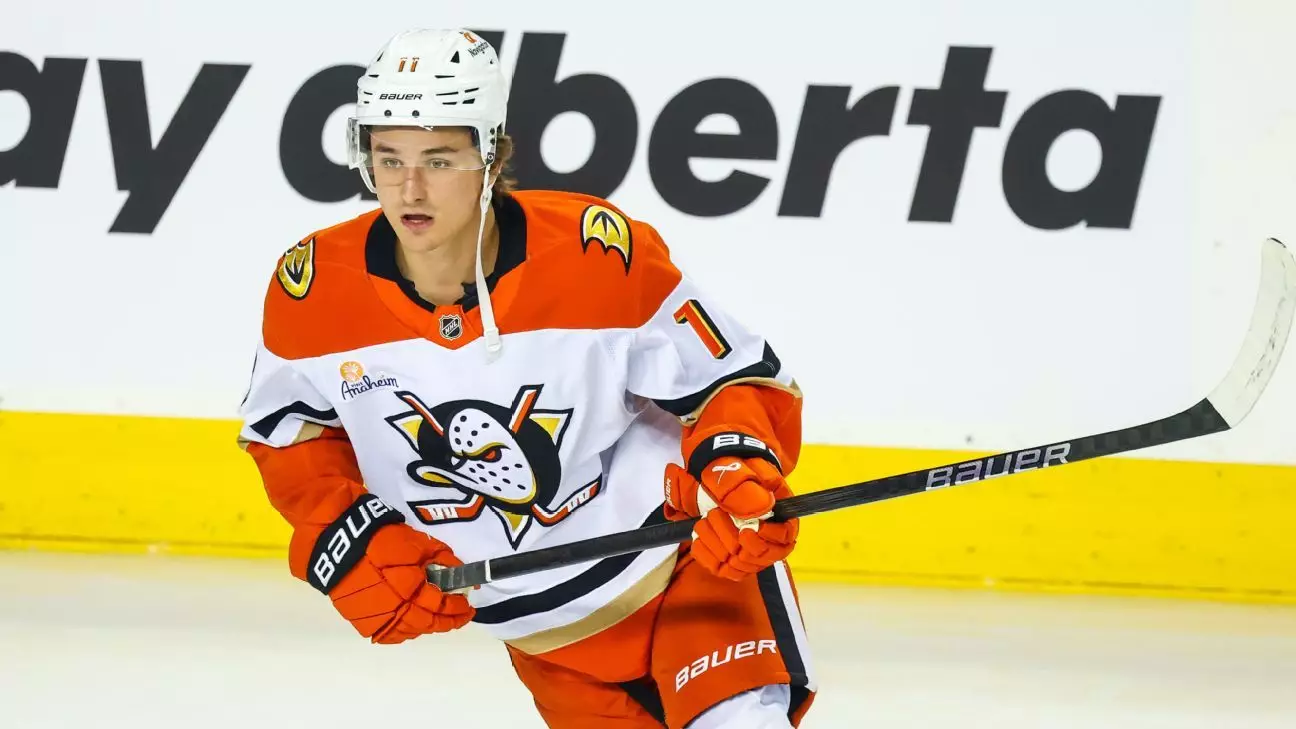In a move that has sent ripples throughout the NHL, the Anaheim Ducks made headlines this Monday by trading forward Trevor Zegras to the Philadelphia Flyers. This transaction, long anticipated by fans and analysts alike, has immense implications for both teams involved. Zegras, once heralded as one of the brightest stars and a centerpiece for Anaheim, is now faced with the challenge of reinvigorating his career in Philadelphia. This trade is not merely a shift in geographic location; it represents a critical juncture in the careers of Zegras and those for whom he will play.
The Ducks received forward Ryan Poehling, a second-round pick (previously held by the Columbus Blue Jackets) for 2025, and a fourth-round pick for 2026. While both transactions and draft selections are significant, the narrative largely revolves around the potential future of Zegras—a player whose previous seasons suggested he was on a trajectory to become a leading talent in the league.
The Flyers’ Ambitious Strategy
For the Philadelphia Flyers, adding Zegras can be interpreted as a strategic gamble that signals their intention to accelerate their offensive capabilities. The Ducks had struggled offensively, ranking 24th in goals per game last season, and Zegras may serve as the catalyst to flip that statistic on its head. His ability to score, coupled with the potential to serve as a top-line center alongside the likes of Sean Couturier and Noah Cates, fosters excitement about the upcoming season.
However, skepticism lingers. Zegras, who has recorded two consecutive 60-point seasons and boasts two 20-goal years, has faced injury setbacks and inconsistencies. Thus, the quest to return to his prior form brings with it a narrative of uncertainty. The question on everyone’s mind is whether Philadelphia can extract the untapped potential hidden beneath the challenges of Zegras’ recent seasons.
Surrounding Talent and Future Prospects
To maximize Zegras’ capabilities, the Flyers must create an environment conducive to success. Philadelphia’s roster is rich with young, dynamic forwards like Tyson Foerster, Travis Konecny, Matvei Michkov, and Owen Tippett. This lineup could allow Zegras to regain his confidence and flourish in the offensive zone. After all, it was not long ago that Zegras was being celebrated as one of the game’s future standouts, gracing the cover of NHL 23 and generating buzz as a potential franchise player.
For the Flyers, who have consistently struggled to find offensive firepower, this trade could indeed redefine their position as contenders in the Eastern Conference landscape. Yet, it raises another question: Was Zegras’ trade an admission of failure on the part of the Ducks, or was it a calculated risk to shed a once-promising piece in exchange for a more reliable future?
The Ducks’ Calculated Decision
From Anaheim’s perspective, parting ways with Zegras opens up a myriad of possibilities. While he was undeniably talented, the Ducks have shown faith in younger prospects like Leo Carlsson and Mason McTavish. Both players exhibited poise and skill last season, signaling that the franchise’s future does not hinge solely on Zegras. Carlsson’s emergence as a potential top-line center and McTavish’s rising talent create a forward core that can potentially outshine what Zegras may have offered.
Furthermore, Ducks’ general manager Pat Verbeek must navigate a crowded salary cap landscape filled with looming restricted free agent contracts and the commitment to building a sustainable team. Zegras’ hefty $5.75 million annual salary creates pressure—especially when juxtaposed against seeking cheaper, effective alternatives. By trading Zegras, they can focus funds and resources on rounding out the roster with players who bolster their long-term goals.
Financial Freedom and Future Implications
NHL contracts are often a double-edged sword, and the Ducks’ decision to trade Zegras shifts their financial paradigm in a significant way. With about $36 million in projected cap space this season, they would appear to be in an enviable position. However, closer scrutiny reveals the tightrope Verbeek must walk concerning upcoming extensions for core players and their potential future as unrestricted free agents.
On the other hand, the Flyers, equipped with more than $15 million after acquiring Zegras, stand to strengthen their chances for the immediate future while keeping an eye on the hope of building a competitive roster that can contend in the league for years to come. The balance between risk and potential reward is the essence of this trade, and only time will tell who come out ahead in this high-stakes gamble.
In a league defined by swift changes and relentless competition, the Philadelphia Flyers and Anaheim Ducks recently made decisions that could shape the course of their franchises for years to come. While questions persist, what emerges is a bold shift that may define the upcoming seasons of both teams in the NHL’s ever-evolving landscape.

